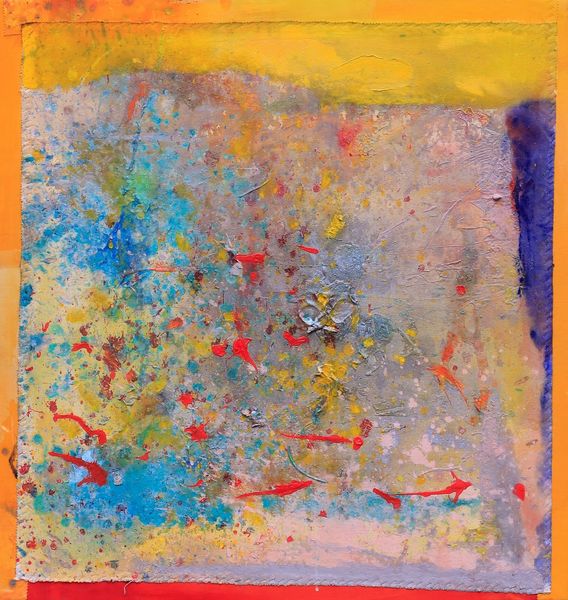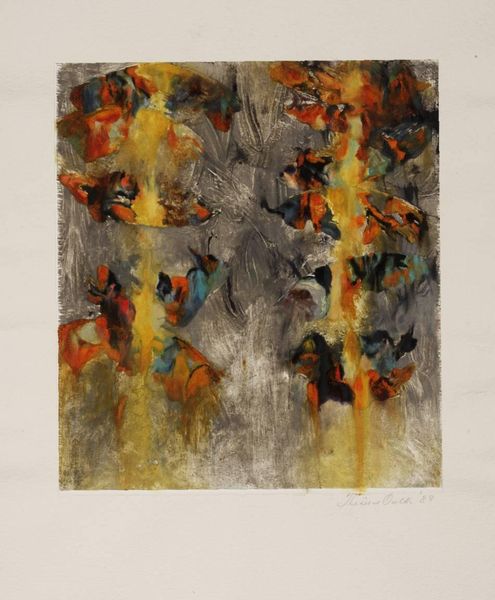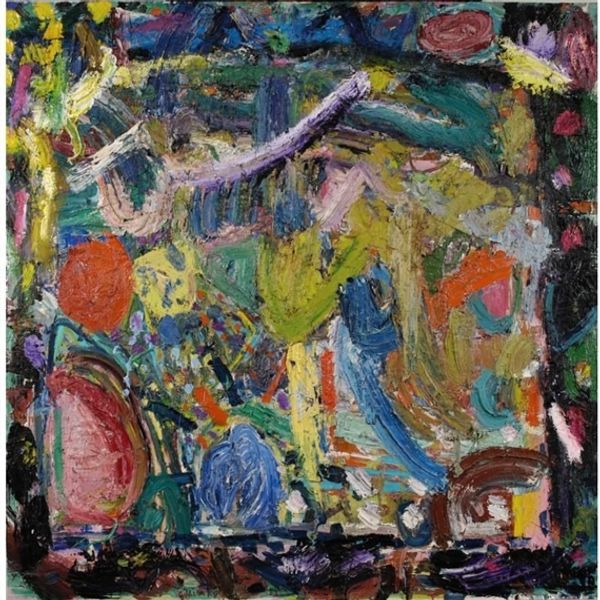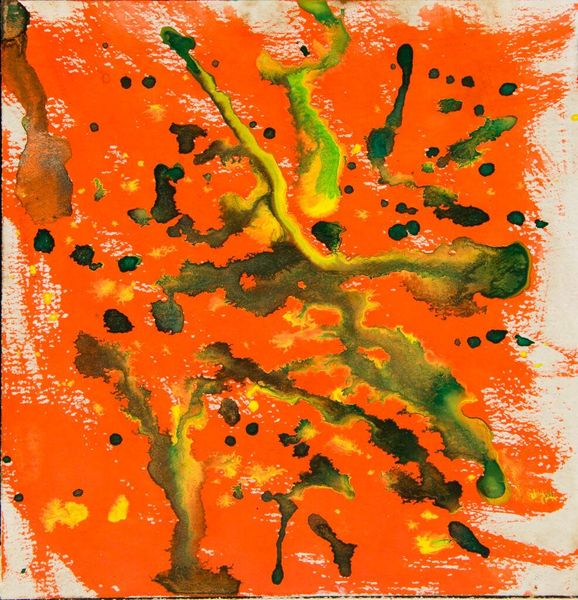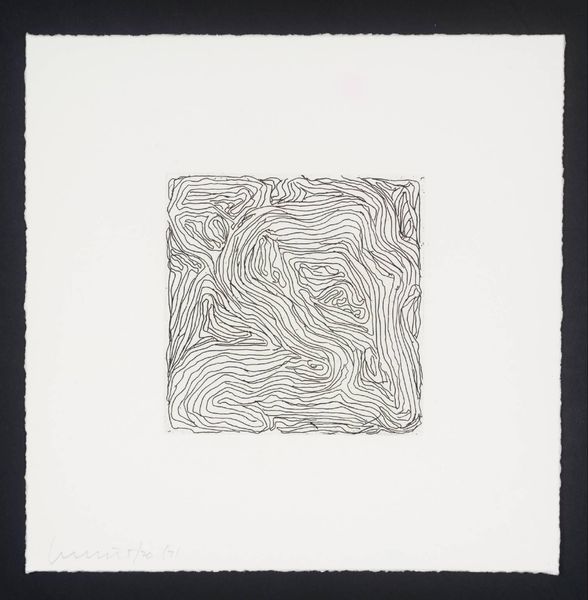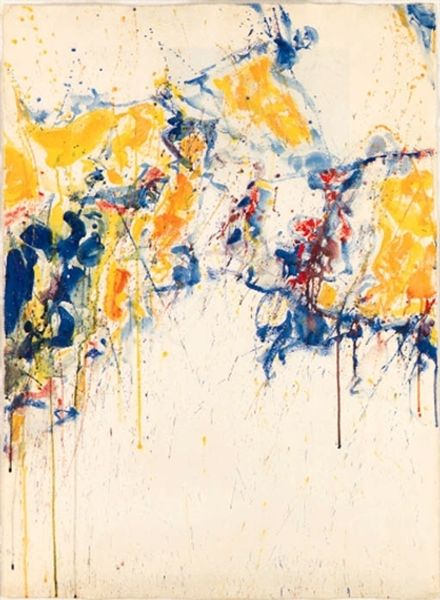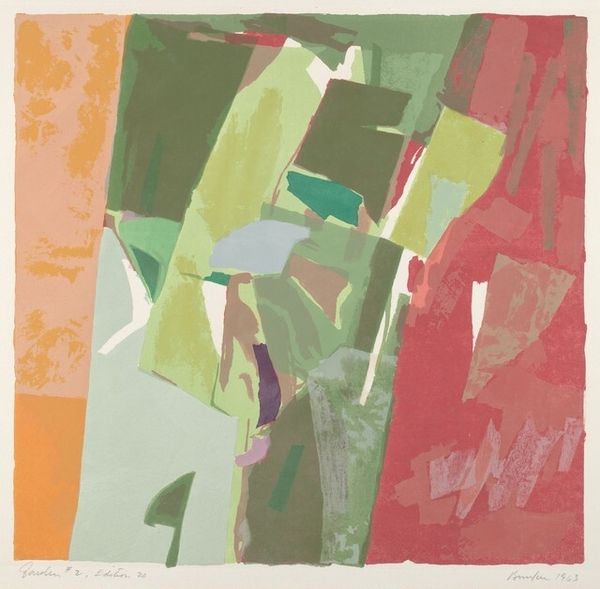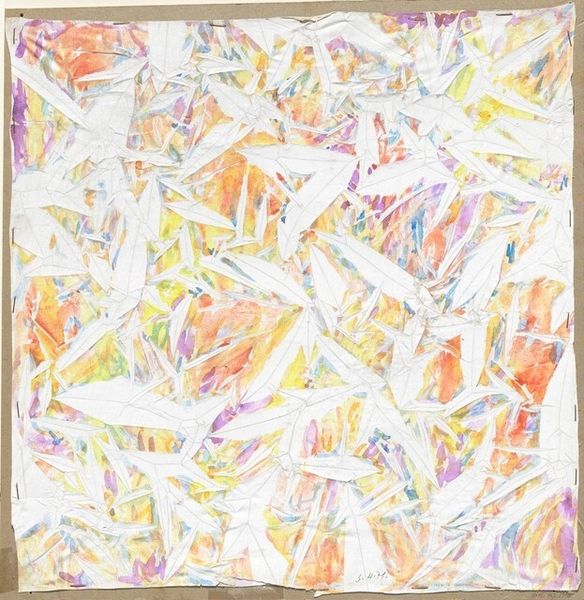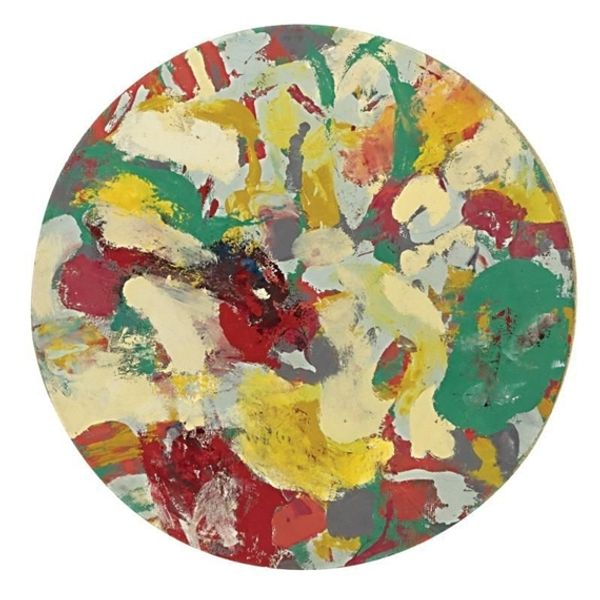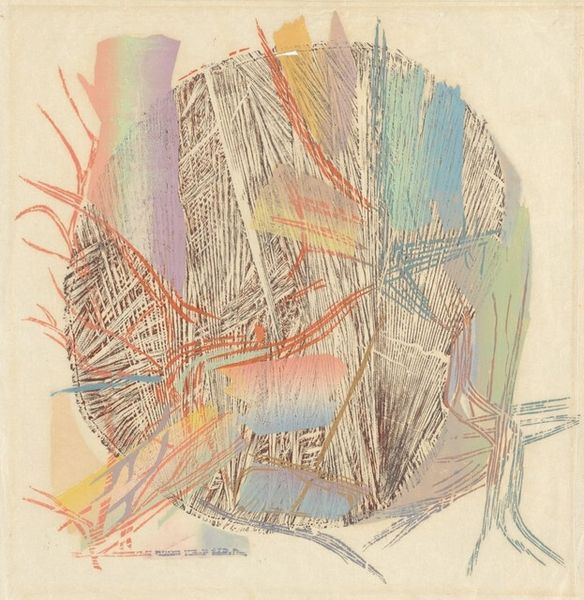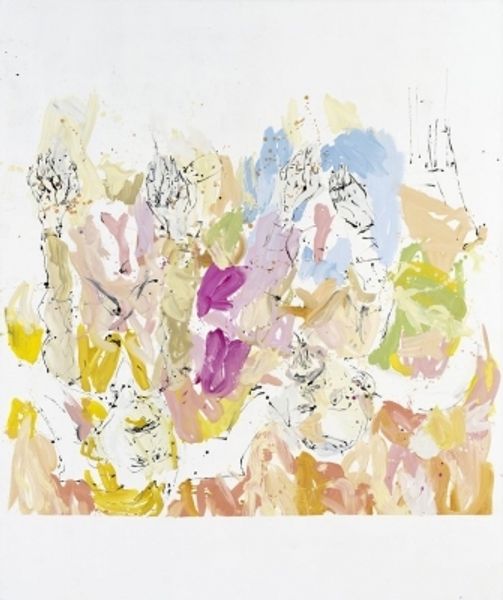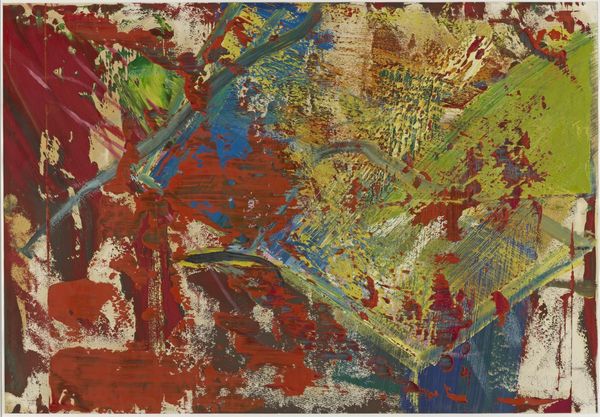
painting, acrylic-paint
#
abstract-expressionism
#
abstract expressionism
#
abstract painting
#
painting
#
acrylic-paint
#
abstraction
#
watercolor
Copyright: Alfred Manessier,Fair Use
Curator: Ah, yes, here we have Alfred Manessier's "Early Spring" from 1966. Currently hanging at the Tate Modern. Editor: My first thought? A sugar-spun battlefield! A chaotic harmony. There’s an immediacy to the gestures here—almost reckless—but held within these muted, dreamy pastels. Curator: Reckless is a lovely word for it! Manessier often spoke of wanting to capture the "lyrical explosion" of the natural world. You can see that striving, can't you, in the vibrant chaos. But let's consider its material being. It’s an acrylic painting. These were times of new possibilities. Acrylics offering an unprecedented capacity to quickly layer colours, allowing artists to explore spontaneity in unprecedented ways. Editor: Yes, these colors! The acrylic base allows for the juxtaposition to give a sense of a half formed world. They don’t blend, do they? Each color screams in harmony but you know that it’s constructed… and also that it could, at any moment, simply, just unravel. You sense the process of addition. A work constructed from many individual moments...like memories themselves. Curator: Exactly, think about that moment. The mid-60s...experimentation and pushing boundaries in all fields! But also... remember this is a man deeply inspired by stained glass. And it isn’t stretching to observe the interplay of colors creating light, emulating, on canvas, that stained glass aesthetic, would you agree? A construction built out of separate elements. Editor: The glass analogy works—the way light both pierces through and gets caught. In terms of art-making, acrylic paint at that time had strong links to craft activities and “do it yourself” culture, allowing for a quicker realization of ideas in times of the new modern subjectivity and... fast-paced times? But do you consider the scale in its meaning, and the potential democratization of the act of art, considering its mass-production nature with a series number? Curator: An interesting view! Perhaps. "Democratization" can mean different things. For Manessier, I think, it was less about mass appeal, and more about distilling something intensely personal – a deeply felt response to the emergence of spring after the cold bleakness of winter – into something universal. To reach some inner place where everyone recognizes its own emergence. It’s spring *after all*. Editor: It reminds me that every creation has many layers, of action, reaction, historical and personal meaning. Thanks! Curator: Agreed, a beautiful, almost optimistic expression in the face of passing time and human action.
Comments
No comments
Be the first to comment and join the conversation on the ultimate creative platform.
